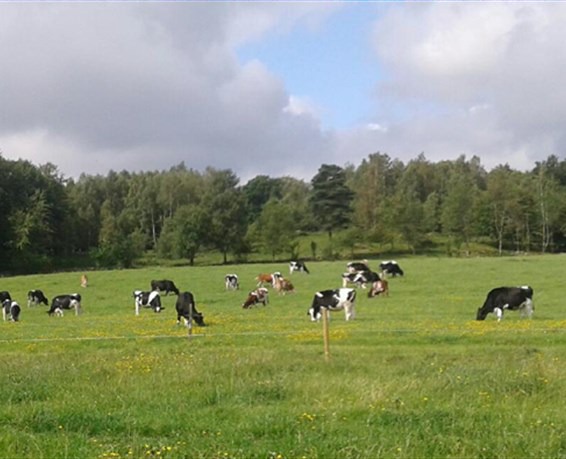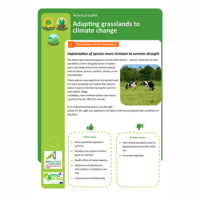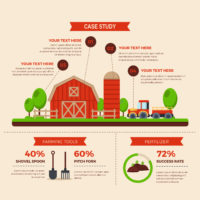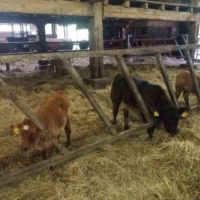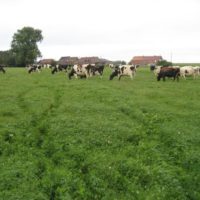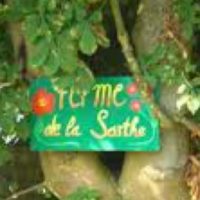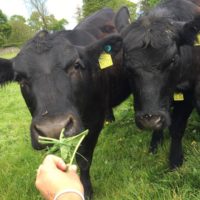A simple system for rotational grazing for heifers and steers
Anna and Anders Carlsson, Skogsgård
 A simple system for rotational grazing for heifers and steers (.pdf)
A simple system for rotational grazing for heifers and steers (.pdf)
 Enkelt fållsystem förbättrar ungdjursbetet (.pdf)
Enkelt fållsystem förbättrar ungdjursbetet (.pdf)
Description
Four paddocks give better grassland quality and animal growth
The grazing system at Skogsgård is highly developed, with dairy cows grazing a high-yielding paddock system, but Anna and Anders wanted to improve the less-intensive grazing system for heifers and steers. The goal was to get more efficient use with moderate effort through:
- 50% of cattle in early grazing, with big bale silage as a complement.
- The rest when demand is equal to grass growth, on ‘magic day’.
- Rotate cattle between four paddocks once a week.
- Remove 50% of cattle in mid-August. Feed on clover undersown in cereal stubble, ley re-growth or a temporary grazing crop like turnips.
Compared with continuous grazing, Anna’s and Anders’ system can double cattle growth and feed 50% more animals on the same area. The rotation also generates better flora for grazing. When grass growth exceeds demand, they increase the number of cattle, harvest or force the cattle to graze. Compensatory growth makes cattle regain growth later.
Reason for the innovation
Efficient grazing gives better economics and a good landscape
Rotational grazing like this increases yield and quality of grass-land, with low labour intensity. Water is supplied by standpipes at places where several paddocks meet. Trampling is avoided by providing alternative paths for cattle. When growth increases in spring, it is a challenge to get the right stocking rate or harvest.
Farm description
Environment
- Soil types: Sandy loam, silt loam and loam
- Climate: Temperate continental climate
- Altitude: 50 m a.s.l
- Slope: 0 %
- The farm is situated in Halland, south-west Sweden.
Grassland management
- Grazing: Yes!
- Temporary grassland based on red clover, white clover, perennial ryegrass, timothy and chicory.
- Contracts in manure spreading. Uses own machines for harvesting.
Structure
- Annual Work Unit: 6
- Organic production
- 315 ha arable land area, of which
- 160 ha temporary grassland area
- 10 ha semi-natural grassland area
- Rye, winter wheat, faba beans, oats, barley and fodder crops like swedes, turnip and fodder kale are grown.
Animal performance
- 240 dairy cows (Holstein, Fleckvieh, Ayrshire), producing 8,300 kg milk per year.
- On-farm recruitment and beef production.
Why it is working
Anyone who wants to improve an extensive grazing system can try this. It is a better grazing system with low intensity of labour. The four paddocks result in more efficient pasture use. There is a need for interest and skill to get the right stocking rate and identify when harvesting is needed.
Additional information
| Farming system | organic farming |
|---|---|
| Domains of innovation | grazing management system |
| Main types of animal | beef cattle, dairy cattle |
| Country | Sweden |
| Product type | Farmer portrait |
| Language | English, Swedish |

